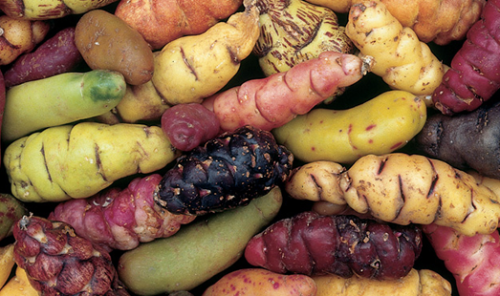Resolution of Rome – Guidelines for the protection of Cultural Diversity
RESOLUTION OF ROME – PDF
Resolution of Rome
GUIDELINES FOR THE PROTECTION OF CULTURAL DIVERSITY
Italian Delegation to the UNPFII
Rome, Italy; Bratislava, Czech Republic; London, United Kingdom; Accra, Ghana; Vapko Volta Region, Ghana; Paris, France; Pretoria, South Africa; Tulalip Reservation, USA; Toppenish, USA; Beer-Sheva, Israel; Madrid, Spain; Seville, Spain; Nairobi, Kenya; Durban, South Africa; New York, USA; Johannesburg, South Africa; Geneva, Switzerland.
Background
This document is the outcome of various conferences and meeting held with the participation of representatives from Indigenous Peoples, local communities, universities, companies, international and governmental organizations.
It is intended as one of a basic documents with a view to the conference “The value of Cultural Diversity in Planning Sustainability” to be held in the next future.
Premise
In many international negotiations such as the Convention on Biological Diversity, the Barcelona Plan of Action for the Mediterranean, the Convention to Combat Desertification, the Agenda 21, the Panel of Forests, a new basis for dialogue and negotiation has been established in which Aboriginal, Indigenous Peoples and local communities are given an important role. At the same time, other intergovernmental organisations including UNESCO, FAO, UN Office of the High Commissioner for the Human Rights, ILO, WIPO and the European Commission are also working to protect the rights of Aboriginal, Indigenous Peoples and local communities.
These developments are an important step since they recognise there has been a shift in judgement in Western scientific and political circles. Now there is a general tendency to recognise in an increasingly explicit manner the scientific value of the knowledge of Aboriginal, Indigenous Peoples and local communities.
But although a number of international legal instruments now contain provisions affirming the importance of protecting the traditional knowledge and traditional practices of Indigenous Peoples, nonetheless we are convinced that no instruments to date have recognised Cultural Diversity’s fundamental importance and the protections that must be afforded to it.
From this point of view a number of limitations have emerged in the course of international negotiations:
There is a limitation at the outset. At the 1992 Unced in Rio, in considering negative ecological phenomena such as the loss of biodiversity, the greenhouse effect, deforestation, desertification, spreading of environmental and endemical illnesses, there never was any explicit recognition of the relation between these problems and the highly dangerous tendency to level all Cultural Diversity and to make the whole world uniform.
Until now, the process of the reduction of Cultural Diversity has not been cause for alarm and no one has explored the possibility of initiating a new line of scientific research and dialogue among peoples that would be based on an understanding of the inextricable relation between Cultural Diversity and Environmental Diversity.
On the contrary, efforts have focused on the attempt to find global solutions within the context of the cultural-scientific-technological system that has produced the very environmental problems that need solving. These kind of global solutions have not yet appeared and Cultural Diversity has still received no consideration.
References to traditional knowledge and to the practices of Aboriginal and Indigenous Peoples and local communities that are found in the current International Conventions are clearly insufficient for coming to terms with the essential role of Cultural Diversity. Cultural Diversity, including Linguistic Diversity, is the instrument, the means, the art or technique of existence in which humanity establishes relationships with Environmental Diversity and perceives it, gains knowledge of it , nurtures it and makes it grow.
Cultural Diversity is the expression of local and practical ways in which human beings relate to their environment and it can be a source of happiness and satisfaction for those who practice it.
In the texts of International Conventions and accords, traditional knowledge is not valued for what it is, that is a complex, different, spiritual, cognitive, and technical alternative to formalised Western science and technology. A complete self-sufficient system which is able to meet all the expectations of its members and which pursues wellbeing and health protection.
To the contrary, the current interpretation holds that traditional knowledge is merely a source of information that can be useful in filling gaps in the knowledge of formalised Western science, medicine, pharmacology, nutrition.
This way of looking at the question constitutes a serious conceptual and practical error. Nobody can accept the hypothesis that traditional knowledge should be seen as a source of useful information that can flow freely into Western science, because traditional knowledge has different categories of thought, different basic premises, different methodologies and different objectives. No piece of information derived from traditional knowledge can be usefully entered into Western databases and inserted in formalised models, since they are part of a scientific system that is incompatible with traditional knowledge.
Recognition of this fundamental diversity is the only basis for beginning a dialogue or a kind of exchange between western science and traditional knowledge, even from a health point of view.
Cultural Diversity represents a complete and self sufficient system that can give its greatest contribution only when it is practised in all its spiritual, religious, practical, ecological, territorial, ethical and legal dimensions. Therefore any attempt not to take all these aspects into account works against Cultural Diversity’s ability to make useful proposals and even threatens the very existence of Cultural Diversity.
Current International Conventions arise in a very specific cultural, organisational and legal contact and they function according to well-tested models of negotiation. This means that Cultural Diversity finds itself treated according to conceptualisations that are extraneous to it and that have arisen for purposes other than the protection of Cultural Diversity.
The most serious consequence is that the specificity and the importance of the Indigenous question is not recognised and it is treated in the same manner as other problems that do not directly relate to it, such as the Clearing House Mechanisms or the Biosafety Protocols, Checking Procedures, Principles of Safeguard, Precaution, Ethics, Bioethics etc.
These limitations can constitute a real danger. As long as the protection of Cultural Diversity is left only to conventions on the environment, these conventions will act merely as mechanisms of levelling and normalisation of Cultural Diversity and will lead to a process of assimilation.
On these bases, we think it is necessary to open a process of negotiation to develop a new international instrument specifically created for the protection of Cultural Diversity, an instrument to be developed by both Indigenous and non-Indigenous Peoples.
In light of these principles, for the purpose of developing guidelines for a new international instrument for the protection of Cultural Diversity, the Conference of Rome recognises:
-
that Environmental Diversity exists and Cultural (and Linguistic) Diversity exists and this is constituted by innumerable distinct components including peoples, nations, tribes and communities and that both Environmental and Cultural Diversity are assets that are equally important for the continuation of all life on the planet;
-
that Cultural (and Linguistic) Diversity and Environmental Diversity are intimately connected in a reciprocal and local relationship and that the alteration, destruction or disappearance of the one, leads to the alteration, destruction or disappearance of the other;
-
that the maintenance of Cultural (and Linguistic) Diversity allows all peoples to know, to value and to reproduce Environmental Diversity;
-
that the rigor and the effectiveness of the laws and oral traditions promote the maintenance of Cultural and Environmental Diversity;
-
that traditional knowledge that is cosmogonic and holistic is a highly technological expression that can promote correct management of the environment, in situ conservation and sustainability;
-
that nomadism and other ways of living including hunting and gathering, fishing and small-scale agriculture, have high spiritual and cognitive value that allows for the maintenance of diversity;
-
that the survival of the nomadic and other traditional ways of living is fundamental for the maintenance of Cultural and Environmental Diversity;
-
that each Culturally Diverse People develops its way of life in a specific spiritual, ecological, territorial, intellectual and legal environment;
-
that the maintenance of traditional communal institutions such as communal land ownership and land use and communal decision-making is also for the survival of Cultural and Environmental Diversity;
-
that each Culturally Diverse People defines its own identity by means of laws, regulations, obligations, rights, traditions, customs, languages, forms of communication, rites, practices and behaviours establishing internal relations as well as external relations with both living and non-living entities;
-
that each Culturally Diverse People has scientific, technological, spiritual, ethical and cognitive value;
-
that each Culturally Diverse People defines a complex and complete system fully able to take decisions, promulgate laws and regulations, transmit knowledge and education, prevent and treat illnesses, pursue and guarantee satisfaction and wellbeing;
-
that each Culturally Diverse People holds collective and individual intellectual property rights over its own intellectual, technical production and also its own image and the spread of its archaeological treasures and exercises recognised and recognisable rights over all of these.
The Conference of Rome also considers:
– that there exist Culturally Diverse Peoples that conceive their existence as strictly connected with plants, animals and the inanimate world and that these relations are sources of happiness and joy that are necessary for their survival;
– that there exist physical and mental places that have become sacred and the destruction, conversion or improper use of these places can create grave harm in the life of these peoples and in the environment in which they define their identity;
– that activities in the areas of cloning, genetic alterations of people, plants and animals, patents on living organisms, the destruction of species, the modification and destruction of landscapes can cause pain, unhappiness and irreversible damage for many different Culturally Diverse Peoples.
In the area of Environmental Protection, the Conference of Rome recommends:
– that official government and international recognition be given to the fact that the traditional knowledge of Aboriginal, Indigenous Peoples and local communities is an essential and crucial part of the knowledge base which countries have available to ensure the wise and sustainable use of the natural environment;
– that only the Aboriginal, Indigenous Peoples and local communities know and understand the appropriate methodologies for the use and transfer of their own traditional knowledge;
– that each component of Cultural Diversity be given full access to all species that keep their culture healthy and strong and that their full right to utilise these species fully be recognised;
– that guidelines for environmental assessment be made or developed by the components of Cultural Diversity such as Aboriginal , Indigenous Peoples and local communities for their own individual needs;
– that outside access to species be limited; the components of Cultural Diversity such as Aboriginal, Indigenous Peoples and local communities have knowledge they can keep to themselves just as national governments do.
– that privacy or sacred information be considered areas of self-governing;
– that local and traditional descriptions of species and species utilisation be employed including using environmental assessment processes that identify species with indigenous language vocabulary;
– that a “Cultural Ecosystems Stories” approach be used to furnish the names of species and to evaluate the condition and the abundance of these species – indicating how available they are for sustaining a healthy culture;
– that traditional knowledge be incorporated, where appropriate, with science in assessments of fish, wildlife, hunting, gathering and that consistency of information be presented to ensure that the process is repeatable and defensible;
– that species be identified by including traditional languages when assessments are conducted so that the components of Cultural Diversity such as Aboriginal, Indigenous Peoples and local communities can respond and identify possible impacts on them and on their ecosystem;
– that governments, international organisations, industries, banks, and research institutes provide a sufficient quantity of funds and resources for the development of specific and local plants in the area of sustainability with the participation and the management of the components of Cultural Diversity such as Aboriginal, Indigenous Peoples and local communities;
– that traditional knowledge and the components of Cultural Diversity be considered in binding fashion in the impact assessments and evaluations of sustainability in areas of interest of them.
The Conference of Rome in the area of Education also recommends:
– that government and research bodies provide sufficient resources and funding to ensure the preservation and development of traditional knowledge in terms defined by Aboriginal, Indigenous Peoples and local communities;
– that the components of Cultural Diversity such as Aboriginal, Indigenous Peoples and local communities be given positive encouragement to enter into and create university courses;
– that there be continuing general education in all countries to further understanding the traditional view of ecosystems including which species are important to keep the native culture healthy and strong;
– that Western-trained scientists have access to training, where appropriate, in how to appreciate and understand the crucial role that Indigenous and traditional knowledge plays in contributing to human knowledge.
The Conference of Rome recommends that all Parties make a commitment to:
– protect Cultural Diversity and to recognise its expressive, linguistic characteristics and its ceremonies, rites, laws and regulations;
– protect the sacred places, animals, plants, living and non -living entities of the components of Cultural Diversity such as Aboriginal, Indigenous Peoples and local communities;
– encourage respect for laws and local regulations of the components of Cultural Diversity such as Aboriginal, Indigenous Peoples and local communities and in the case of conflicts and incongruities with national legislation, to find modalities of coexistence.
The Conference of Rome and the International research workshop “Sustainability of Taste” in the nutrition field
Aware that food is a reflection of the relationship between culture and environment and is the product of the relationship between plants, animals and human beings;
Aware that also food is the result of combinations among environmental, cultural, sensorial and technical resources according to laws and traditions of each single community and expresses a local cultural relationship with the land and takes a ritual and sacred value;
Aware that also taste, the experience of the senses, qualifies food, specializes, differentiates and makes it familiar and safe and that taste is an indicator of security and quality of food and its processes, tested by age-old practises which enable us to detect the cultural and territorial origin of food;
Recognizing that when the relationship between culture and environment is well balanced species, cultivation and breeding not only survive but they develop, diversify and sustain themselves, when this relationship is disturbed, the species rapidly decline in both abundance and diversity;
Affirming that animals may not be bred just and only for being eaten and that trees may not be cultivated just and only for being cut;
Considering that for thousands of years indigenous peoples, aborigines and the local communities have developed, tested and applied holistic systems of food production and that these systems, based on the traditional management of nature, have been devoid of health risks and have left a little ecological impact;
Worried by the fact that the current system of food production has showed the uncertainties and the shortcomings of relying on science alone;
Worried by the fact that the scientific and technologically-based approach to food production has produced serious threats to environment, human, animal and vegetable health and the preservation of biodiversity;
Worried by the fact that mad cow disease is one of the most prominent and disconcerting examples of a scientific, economical and technologically-based approach to food production;
Reasserting that the relationship between humans, animals and plants constitutes a source of satisfaction, knowledge and happiness,
The Conference of Rome asks and invites the national and international bodies
1. To recognize the urgent need for a profound re-orientation in the current food production methods;
2. To keep into the right consideration the strategic importance of cultural and biological diversity: natural resource and environmental protection efforts must not only protect, but restore the historic diversity and abundance of plant and animal species that are integral to indigenous lifestyles;
3. To recognize that the scientific, genetic and technical alteration of plant and animal species has social cultural, health and spiritual implications, in changing the taste of traditional food;
4. To guarantee the development of specific methodologies for land use and management that mimic the natural functions and integrity of traditional ecosystems, restoring the conditions that are necessary for the maintenance of cultural and biological diversity;
5. To recognize the important role of women with regard to food preparation: the traditional knowledge and practises of women must be maintained to ensure food safety and security;
6. To recognize that the modern techniques of food preparation and consumption are diminishing women’s control over the origin, content and health effects of the food they prepare for their children and families;
7. To recognize the importance of maintaining ecological structures and functions allowing a sustainable production of food otherwise a more widespread availability and a right cost of production and food stocks won’t be ensured, determining a critical situation for the security of nutrition and public health;
8. To understand that without the widespread adoption of sustainable practises, the natural systems will be disturbed: the climate change, for example, negatively affects the local weather patterns and, as a consequence, the existence of the habitats and survival of many species;
9. To understand and recognize the adverse ecological impacts of resource extraction, industrialization, deforestation, urbanization and tourism;
10. To commit in order to establish specific principles and precautionary regulations in the food production and the environment management which, including traditional nature, health and ecology, ensure the possibility to take specific, informed and conservative decisions;
11. To recognize the need for the immediate cessation of cloning and genetic alterations of plants, animals and mankind until and only when their material and unknown implications are totally known and understood by everybody;
12. To recognize the need of the immediate cessation of the transgenic practises of plants, animals and humans until and only when their material and unknown implications are totally known and understood by everybody;
13. To proceed to the immediate cessation of voluntary and arbitrary practises concerning the massacre and extermination of animals and plants, in particular of cows;
14. To recognize that the practises of genetic alterations, transgenic cloning, massacres and extermination of animals and plants (and mankind) have got serious racist implications;
15. To proceed to the immediate cessation of intensive breeding and cultures which anyway do not respect the environmental conditions and the times and ways of the biological cycles of the species;
16. To recognize the need to prevent the suffering of animals and plants and to commit oneself to establish principles and rules in order to guarantee their full cultural well-being and the development of the biological and life circle;
17. To recognize the urgency for the organization and diffusion of programmes concerning food education and the employment of resources, in particular towards children and young people, according to programmes that should be based on the knowledge and traditional and indigenous practises;
18. To ensure and exploit the cultural diversity and the employment of the most rigorous environmental assessment methodologies with particular emphasis on the utilisation of traditional species;
19. To recognize that the indigenous people, aborigines and the local communities because of the scientific- technological systems of food production and the global loss of biodiversity run greater risks of disease, a higher rate of mortality and a diminished ability to sustain the traditional lifestyle of their own existence.




